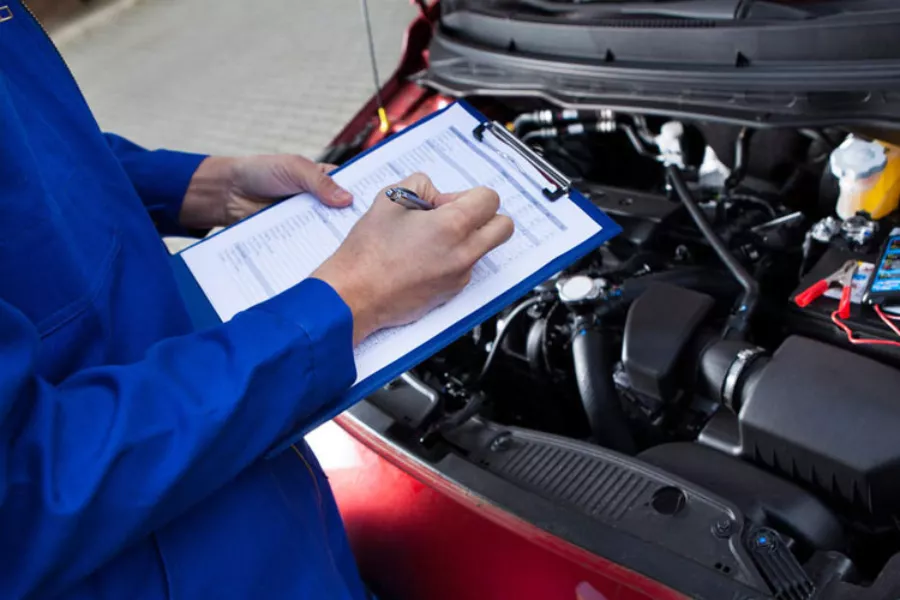If you have had the chance to shop around for used cars before, then you’ll have heard of certified used cars or certified pre-owned cars.
![Certified pre-owned cars are typically well-kept [Photo: Helgi Halldórsson] A picture of cars on a car lot.](https://img.philkotse.com/temp/2024/07/26/certified-preowned-bb10-wm-3b23.webp)
Certified pre-owned cars are typically well-kept [Photo: Helgi Halldórsson]
As such, many of you, upon hearing about these, might have learned that these are used cars that are sold by a dealership, and are typically in good shape, around 4 to 6 years old, and are low mileage. They also went through a rigorous inspection process, and are usually covered by a warranty.
To this end, these pre-selected and inspected vehicles differ very much from the regular, non-certified used cars sold via a used car dealership, or by the owner.
But how do certified and non-certified cars differ?
Certified used cars vs non-certified used cars
As we’ve mentioned above, certified pre-owned cars have several advantages over non-certified ones. This is especially true in the context of the Philippine market.
For starters, a certified pre-owned unit has undergone a thorough inspection by the dealership, usually a franchised brand dealership, to ensure that they are mechanically sound. Furthermore, a used car should fall within a pre-set odometer reading in order to qualify. This of course ensures that a certified pre-owned car isn’t too old.
By passing the dealership’s inspection, the brand will most likely provide the vehicle with warranty coverage. No, a certified pre-owned car’s warranty isn’t as extensive as a brand-new unit, though it may cover specific components, usually critical ones.

Certified pre-owned cars have undergone inspection
By being sold by a brand dealership, a certified pre-owned car is usually kept better than a non-certified used car. This is especially true considering the fact that brand dealerships usually have their own car storage areas or lots.
Contrast this to your regular, non-certified used car, which is kept in lots that are accessible to the public. This isn’t the case for all dealerships per se, but this is common.
In total, a buyer opting to get a non-certified pre-owned car should practice “buyer awareness.” To this end, the buyer must do their own diligence by inspecting the used car by themselves to assure its roadworthiness, or shell out money to hire a mechanic to inspect the car.
Moreover, a buyer can also be assured that the papers of a certified pre-owned car are in order. The opposite of course might be true with non-certified ones.
Differences in pricing and availability
There are, however, some things to watch out for if you’re opting to buy a certified pre-owned/used car.
For starters, these are typically more expensive than a non-certified used car that’s sold by a used car dealership or a private seller. The dealership selling the certified used car after all, has to cover the costs of storing the car, inspecting it, and its warranty if applicable.

One of the brands that have a certified pre-owned program in the Philippines is Lexus
Furthermore, stocks and listings for non-certified used cars are much more plentiful compared to certified used cars. One can attribute this to the demand for certified pre-owned units, though another reason is that certifying a used car takes time, and not all used cars submitted by sellers to be certified actually pass the inspection process.
To sum it up, certified pre-owned cars are usually more expensive, but are guaranteed to be reliable. They have been inspected, and are usually bundled with warranties. In turn, non-certified cars should be inspected by the buyer, but are usually more affordable.
For more car buying guides, keep reading here on the Philippines’ largest automotive portal.
Recent posts
- PMS another dealership void warranty Mar 01, 2021
- LTO motor vehicle inspection Jan 05, 2021
- New vs certified pre-owned car: Which is the better choice? Oct 28, 2022











